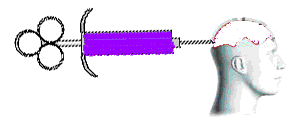- Audiences are passive recipients of messages which are simply injected into them. ( This theory is largely rejected today.) People are manipulated into believing what they are seeing. This theory started back in the 1920s
- They tend to target younger and also older generation as they are more vulnerable and gullible than others.
Two Step Flow
- This theory uses personal influence to affect the audiences behaviour. Information from the media moves in two distinct stages. The first stage is individuals (opinion leaders) who pay close attention to the mass media. The second stage is the opinion leaders pass their own interpretations in addition to the actual media content.
- It is like a filtered version of the Hypodermic Syringe theory. The media has been changed by other people before it get to the audience. An example of this is TV critics as they can change peoples opinion of something before they have even seen it.

Uses and Gratifications Theory
- Contrasts with the theories above, as it sees the public not as a sitting target for the world of media, but claims we use it to suit ourselves, interpreting it in ways that we like and that work for use.
- Researchers Blulmer and Katz say tat individuals choose what they wont to see and believe what they want in order to create there own opinion. they use for Diversion, Personal Relationships, personal Identity and Surveillance.
The Reception Theory
- Links the kind of person you are, your background and your own existing system of beliefs (gender, class, age, ethnicity) to the way you respond to media.
- Reception theory argues that contextual factors influence the way a spectator views the film/television programme. Contextual factors include elements of a viewers personality as well as circumstances of lifstyle and broad social, historical and political issues.

No comments:
Post a Comment